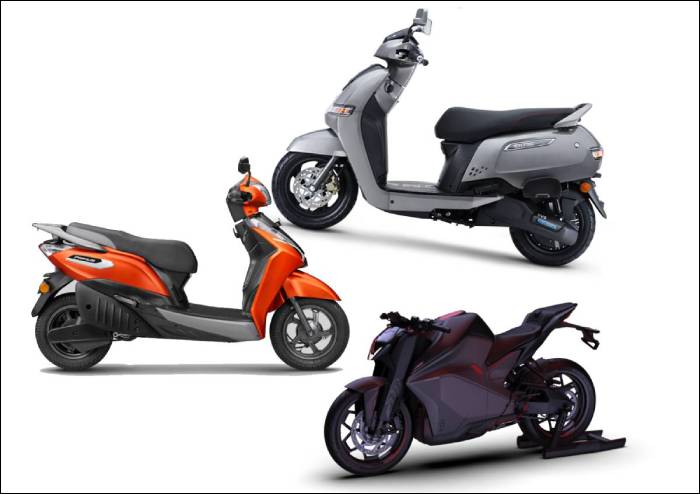
IndiaTechOnline investigation
January 16, 2023:Indians who size up a new vehicle before purchase, are reputed to get straight to the point with that classic query ‘kitna deti hai?. How much (mileage)does it give. Not anymore.
On January 14 as the country’s biggest automobile trade show throws its doors open to the general public at two venues in Delhi and Noida, potential buyers sizing up a n electric car or bike for their personal use, will likely ask “Subsidy kitni hai?” What’s the subsidy? This has become a key consideration, since mileage – or how far the vehicle goes in a full battery – is no longer the critical differentiator.
And there will be no single answer to queries regarding how of the selling price the government has knocked off by way of incentives. Because these incentives come in two parts:
ONE: FAME, or Faster Adoption and Manufacturing of (Hybrid and) Electric vehicles, is India’s flagship scheme for promoting electric mobility. Currently in its 2nd phase of implementation, FAME-II stands extended till March 2024 and has increased the cap on subsidies from 20% to 40% of the vehicle cost. It is based on the kiloWatthour (kWh) rating of the electric motor and average Rs 10,000 per kWh, typically knocking of around Rs 1.5 lakhs from a car’s price. However, government is offering this car subsidy only for those with a showroom sticker of Rs 15 lakhs or less. This is again unexceptionable – helping small car and sedan buyers but excluding the larger SUVs.
For two wheelers the incentive is even higher at Rs 15,000 per kWh and could cut the selling price by Rs 30,000 at least. The manufacturer is required to register under FAME-II, adjust the incentive amount from the cost to the buyer, then claim reimbursement from government. This is generous - and while stimulating demand, puts money directly in consumer pocket.
TWO: The second element that the central government has left to the discretion of states is what they provide by way of incentives—this includes a direct subsidy that the buyer can avail plus any other indirect freebies like exemption of state-regulated vehicle registration charges, annual or lifetime road tax etc.
Different states, different policies
Some states took the centre’s advisories in the spirit in which they were made. Offering among the best deals for the buyer are Gujarat, Maharashtra and Delhi where the direct subsidy on capital cost for two wheelers could be Rs 25,000-30,000 depending on kWh and for cars Rs 1.5 lakhs. Other states with some level of direct cash subsidy include Meghalaya, West Bengal, Rajasthan, Odisha, Bihar and more recently, Uttar Pradesh.
NITI Aayog, with the UK government has created a portal e-AMRIT (Accelerated e-Mobility Revolution for India's Transportation) to provide buyers all information they may require on EVs including the extent of incentive provided by states. However it is sadly not up-to-date.
It is difficult to get an accurate list, since the official e-AMRIT site fails to deliver. The websites of car and bike magazines are another option.
What stands out in stark contrast is the list of states which offer no subsidy at all. The southern states – Kerala, Tamil Nadu, Karnataka, Andhra Pradesh and Telangana – are a solid phalanx of the nay sayers who only offer some minor exemptions in registration and road tax. The states are governed by five different parties so this is not a political decision. (Kerala shuns two wheelers and cars but offers a small subsidy to autorickshaws)
In the case of Karnataka, even the limited offer of a 100% exemption on road tax is said to be under threat. The Times of India quotes Karnataka transport department spokesperson: “By 2030, a significant number of vehicles will be electric, especially in Bengaluru. Motor vehicle tax is one of the major revenues of the state government and any shortfall will affect infrastructure and social welfare schemes.”
This is fallacious because everyone knows these subsidies are not going on forever. Even FAM-II ends next year unless extended. Yes, states will sacrifice some tax in the short term – and will need to attract Indians to shift from petrol, diesel and CNG. But that is an international commitment and the Central government in India has delivered its part and more.
Like the lezim dancers of western India who take a step back for every step forward, Goa reversed its subsidy policy and has withdrawn all capital cost subsidies from July 31, 2022, according an official release.
Other upcountry states with zero subsidy are Uttarakhand, Punjab and Madhya Pradesh.
These state policies fly in the face of both common sense and skew the national mission to turn India into an all-electric electric mobility by the end of the decade. Federal structure prevents the Centre from doing much
Maybe consumer pressure and name-and-shame exercises, might help.
This article has appeared in Swarajya